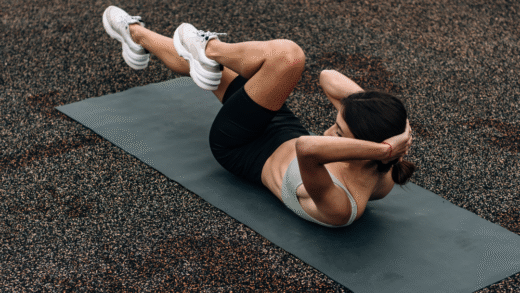Preparing for cosmetic surgery involves several important steps that can significantly impact the outcome of the procedure and recovery. A thorough understanding of the necessary preparations can enhance both safety and satisfaction with the results. From researching premier plastic surgery specialists in Chicago or similar professionals in your area to ensuring physical and emotional readiness, each aspect plays a crucial role in the journey towards cosmetic enhancement.
Before undergoing surgery, it is vital to have a detailed consultation with the chosen surgeon. This includes discussing expectations, potential risks, and post-operative care. This preparation not only builds trust but also helps in making informed decisions about the procedure.
Additionally, practical preparations, such as arranging for recovery support and taking time off work, can ease the process. Creating a supportive environment can make all the difference in healing effectively and enjoying the new results.
Understanding Cosmetic Surgery
Cosmetic surgery focuses on enhancing appearance through various procedures. It differs from plastic surgery, which aims to restore function and correct deformities. Key aspects include the various types of cosmetic procedures offered today.
Difference Between Cosmetic and Plastic Surgery
Cosmetic surgery is primarily concerned with aesthetic enhancement. Procedures in this category include rhinoplasty, breast augmentation, and liposuction miami or similar options in other locations. The goal is to improve visual appeal and boost self-esteem.
In contrast, plastic surgery encompasses reconstructive procedures. These address functional problems or birth defects. For instance, a cleft palate repair falls under plastic surgery, while a breast lift is cosmetic. Both fields may overlap, but the motivations and outcomes are distinct.
Common Types of Cosmetic Procedures
Several common cosmetic procedures cater to diverse needs. Below are some of the most prevalent options:
- Rhinoplasty: Reshapes the nose, enhancing facial harmony.
- Breast Augmentation: Involves implant placements to increase breast size.
- Eyelid Surgery: Removes excess skin or fat for a refreshed look.
- Breast Reduction: Reduces breast size to alleviate discomfort.
- Liposuction: Targets localised fat deposits for body contouring.
- Breast Lift: Elevates sagging breasts, restoring a youthful appearance.
- Tummy Tuck: Removes excess skin and fat for a flatter abdomen.
These procedures can significantly improve one’s appearance and confidence. Each option requires careful consideration and an understanding of the risks and benefits involved.
Preparing for Your Procedure
Preparation for cosmetic surgery involves several key steps, including selecting a qualified surgeon, attending essential pre-operative consultations, and making necessary lifestyle adjustments. These steps contribute to a smoother surgical experience and optimal recovery.
Choosing the Right Plastic Surgeon
Selecting a board-certified plastic surgery in Houston or elsewhere is crucial. Board certification indicates that the surgeon has met specific training and ethical standards. It is essential to review their credentials and experience in the desired procedure.
Recommendations from previous patients and online reviews can provide insight into a surgeon’s skill and patient satisfaction. It is also beneficial to schedule consultations with multiple surgeons. This allows one to compare approaches, discuss concerns, and gauge comfort levels. A supportive and communicative surgeon can significantly enhance the experience.
The Importance of a Pre-Operative Appointment
A pre-operative appointment is essential for addressing any questions and ensuring candid discussions about medical history. During this appointment, the surgeon evaluates the patient’s health, clarifies the procedure, and reviews potential risks.
The discussion may include current medications, allergies, and past surgeries. The surgeon may advise stopping certain medications, such as aspirin and anti-inflammatory drugs, as these can increase bleeding risks. Additionally, herbal supplements and vitamin E should be discontinued before surgery, as they can interfere with recovery.
Lifestyle Changes and Precautions
Lifestyle changes can impact surgical outcomes significantly. Patients are often advised to stop smoking several weeks prior to surgery, as smoking can impede healing and increase complications.
Maintaining a healthy diet and staying hydrated are vital for preparing the body. Reducing alcohol intake in the weeks leading up to the procedure is also recommended. Furthermore, engaging in light exercise can enhance fitness levels and promote better healing post-surgery. Implementing these precautions helps ensure a successful procedure and a smoother recovery.
It is essential to know that any changes in lifestyle or precautions taken should be prescribed by credible doctors. For example, if a male patient is going for breast reduction treatment, consulting professionals like the ones at san antonio gynecomastia center or elsewhere, who are focused on the specific treatment, can be wise. They might help confirm the diagnosis and even suggest non-surgical procedures first. If that does not work out, the doctors might go ahead with surgical procedures with your consent. However, taking precautions and building lifestyle changes might be important for both.
The Day of Surgery
On the day of surgery, a patient should be prepared physically and mentally for the process ahead. Key aspects include understanding the type of anaesthesia that will be used, knowing what to bring to the hospital, and navigating the consent process effectively.
Understanding Anaesthesia
Before the procedure, the patient will meet with the plastic surgeon and the anaesthetist to discuss anaesthesia options. Common types include general anaesthesia, where the patient is fully unconscious, and local anaesthesia, which numbs only the area being treated.
Patients should ask about the specific type that will be used and any potential side effects. It is important to consider the recovery time involved-general anaesthesia typically requires a longer recovery compared to local anaesthesia. Understanding these details helps prepare the patient for what to expect.
What to Bring to the Hospital
Packing a hospital bag ahead of time ensures that the patient has everything needed for a comfortable stay. Essential items include:
- Comfortable clothes: Loose-fitting garments make recovery easier.
- Personal hygiene products: Items such as a toothbrush, toothpaste, and face wipes.
- Entertainment options: Books, magazines, or tablets can help pass the time.
- Medical documents: Include identification, insurance information, and any necessary referrals.
Having these items ready can alleviate stress and enhance the overall experience during hospitalisation.
Navigating the Consent Process
The consent process is a crucial step on the day of surgery. Patients will be required to read and sign a consent form that outlines the procedure, risks, and potential complications. It is a legal document that ensures the patient understands and agrees to the planned surgery.
Patients should take the time to review the form carefully and ask any questions regarding its contents. It is vital to feel comfortable and informed before proceeding. A clear understanding of the surgery will provide peace of mind and support a smoother experience throughout the process.
Post-Surgery Recovery and Care
Post-surgery recovery requires careful attention to ensure optimal healing and management of any discomfort. This phase involves immediate aftercare, home recovery strategies, and long-term scar management.
Immediate Aftercare
Immediately after surgery, patients are monitored in a recovery facility to ensure stability. Health professionals assess vital signs and any bleeding, addressing complications if they arise.
During this phase, caregivers should be prepared with prescriptions for medications to manage pain and prevent infection. Instructions on how to manage the surgical area, including keeping it clean and dry, will be provided.
Patients may need to wear a compression garment to support healing and minimise swelling. This garment must be worn as directed for effective recovery.
Home Recovery Essentials
As patients transition home, it is crucial to have a designated recovery area, equipped with essential items. Comfortable bedding, easy access to medications, and necessary supplies can aid the healing process.
Patients should follow their prescribed medication schedule diligently. Pain management is vital, and any concerns about side effects should be communicated to a healthcare provider.
Hydration and nutrition play a significant role in recovery. Soft foods may be advisable initially, along with plenty of fluids. Rest is equally important; patients should avoid strenuous activities for several weeks.
Long-Term Healing and Scar Management
Proper scar management can influence the final results of surgery. Patients should follow guidelines for wound healing as instructed by their surgeon. This includes using topical treatments or silicone sheets to minimise scarring.
Sun protection is essential to prevent discolouration of scars. Patients should apply sunscreen or protective clothing if they plan to be exposed to sunlight.
Realistic expectations about healing timelines should be set. While initial swelling might subside within weeks, complete healing can take months. Regular check-ups with the surgeon will help monitor progress and address any concerns.





